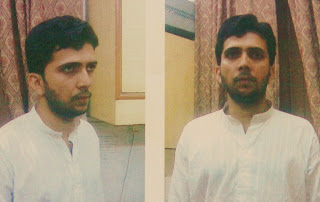Yasin Bhatkal is India’s most wanted terrorist. How has he managed to elude the top sleuths.
ON 13 July 2011, terror revisited Mumbai. Three powerful bombs exploded at Zaveri Bazaar, Opera House and Dadar, killing 26 people and injuring 130. This terror case throws up an interesting anecdote, which is pertinent today in the wake of reports that Indian Mujahideen (IM) leader Yasin Bhatkal, 40, had a hand in the recent blasts that rocked Hyderabad and Bengaluru.
It shows how Yasin Bhatkal alias Ahmed Siddibappa sent the security agencies on a wild-goose chase, if insiders in the Mumbai Anti-Terror Squad (ATS) are to be believed. After planting the bombs, Bhatkal returned to his rented apartment at Nagpada, a crowded area in south Mumbai, located barely half a kilometre from where Maharashtra ATS chief Rakesh Maria holds fort at a sprawling office.
Bhatkal managed to get there within hours of the blasts, at a time when the Mumbai Police had sealed all exit routes, jammed cell phone networks, beefed up surveillance across the state and rounded up more than 150 suspects. Bhatkal and his fellow operatives Waqas alias Ahmed and Tabrez alias Asadullah Akhtar, who the security agencies thought were Pakistan nationals but later turned out to be from Azamgarh, Uttar Pradesh, went about their routine activities while the Mumbai Police groped in the dark for leads.
Bhatkal had rented the apartment since April 2011 and the three men quietly left the building after the blasts without collecting their security deposit from the landlord.
The details came to light when officers of the Mumbai ATS and the Delhi Police Special Cell pieced together information obtained from interrogation reports and CCTV footage from the blast sites in Mumbai. They came to the conclusion that the trio had planted the bombs in Mumbai and later that year in Pune. Their identities were revealed this February by Maria at a press conference in Mumbai.
Let’s turn the clock further back to February 2010, when a powerful explosion ripped apart the popular German Bakery in Pune, killing 17 people and injuring 60. Last week, a local court awarded the death sentence to Mirza Himayat Baig, an alleged IM operative who was the only individual arrested by the Maharashtra ATS in the case.
According to the chargesheet filed in the case, the main conspirator and the bomb planter was Bhatkal, who was seen carrying a backpack in the CCTV footage. Officials point out to Bhatkal’s audacity again when they narrate the manner in which he walked away from the blast site and visited Azam Campus, an educational institute in Pune, to meet his friends and offer prayers. Later, he is said to have stayed in Mumbai for a while before vanishing into thin air.
So, what is it about Yasin Bhatkal that makes him elude seasoned officers from anti-terror squads across India?
Hailing from Bhatkal, a coastal town in Karnataka that saw a spate of communal riots, Yasin Bhatkal was born in 1973 and studied at a madrasa at the Anjuman Hami-e-Muslimeen. In the early 1990s, he left for Pune.
There are fascinating stories that could well be the subject of a Bollywood potboiler about how Bhatkal was indoctrinated by the Shahbandari brothers — Riyaz and Iqbal Bhatkal (no relation to Yasin). The brothers were activists of the Students Islamic Movement of India before launching the IM. But considering the fact that the brothers have fled India, these details remain in the realm of speculation.
The information available in the public domain, if we are to believe the chargesheets filed by anti-terror agencies of 12 states, is that Bhatkal planted the bombs in at least 10 of the blasts that rocked the country since 2008 — Ahmedabad (2008), Surat (2008), Jaipur (2008), New Delhi (2008), Dashashwamedh Ghat in Varanasi (2010), Chinnaswamy Stadium in Bengaluru (2010), German Bakery in Pune (2011), Mumbai (2011), Hyderabad (2013) and Bengaluru (2013).
Intelligence officials, who have been tracking Bhatkal’s movements, claim that by the time they receive any intelligence input, he has already shifted base. They say Bhatkal is averse to technology and a master of disguise.
“How do you track a man who does not use email, changes his address almost every two weeks, stays mostly in rural areas, uses his cell phone for a few seconds and discards his SIM card and phone almost immediately?” asks a Maharashtra ATS officer. “Even Bhatkal’s closest aides don’t know his real identity. In fact, his father-in-law thought he was someone named Imran.”
Interestingly, the law did catch up with Bhatkal once. In 2008, the Kolkata Police had arrested him in a counterfeit currency case. Bhatkal was let off on bail after serving a month-long sentence.
Officials maintain that no alert was sounded because the police had no idea who he was. Bhatkal had identified himself as Mohammed Ashraf from Darbhanga in Bihar and claimed that he was waiting for a consignment of fake currency from Bangladesh. The Kolkata Police couldn’t verify his identity because there was no national database.
In November 2011, Bhatkal gave the slip to the police in Chennai. Apparently, he managed to disappear from his hideout within hours of intelligence officials from Delhi and Chennai reaching there. His father-in-law Irshad Khan told the police team that Bhatkal had gone to the market. He never returned.
Does this perhaps suggest a sinister ploy as rumour mills suggest and Bhatkal’s wife Zahida alleges — that he was allowed to escape by Intelligence Bureau (IB) officers — or is it the result of a massive intelligence failure?
When TEHELKA put the question to former IB director Ajit Doval, he replied, “Don’t we know where Dawood Ibrahim stays? We do, right? But not everything lies in the hands of IB officers. There has to be a serious desire to act.”
Reams have already been written about squabbles among the anti-terror agencies of Delhi, Mumbai and other states, which has aided Bhatkal’s cause. “On one occasion, the Pune Police had footage of Bhatkal visiting a cycle shop, but they did not share it with the Mumbai cops,” says an IB officer on the condition of anonymity. “Look at the recent Boston blasts. Within minutes, the footage was made public. Despite having footage from the Pune and Hyderabad blasts, we are reluctant to share it with our counterparts from other states.”
ANOTHER INSTANCE of a turf war that led to Bhatkal’s escape happened in January 2012 when the Maharashtra ATS arrested Naqi Ahmed in Mumbai. If Delhi Police officers are to be believed, Ahmed was their informer and was being used as a bait to lure Bhatkal, but the Maharashtra ATS, which was unaware of the operation, played spoilsport. The episode sparked off a controversy with Union Home Secretary RK Singh having to intervene.
The incompetence of the security agencies can be gauged by the fact that they don’t even possess a recent image of Bhatkal. They have an old one, but according to an IM operative who was recently arrested, and was shown the photograph, Bhatkal looks quite different now.
“How difficult is it to get an artist to sit with the IM operatives and draw Bhatkal’s sketch using old photographs and CCTV footage?” asks a security expert. “These guys don’t even have posters of Bhatkal at bus stations or railway stations. Then how will they get leads?”
Where does this leave the investigation of the 10 terror blasts, all of which have been attributed to the IM, most of whose alleged foot soldiers are already behind bars? Most importantly, where does this leave Yasin Bhatkal? As usual, the answer remains in the realm of speculation.






Leave a reply